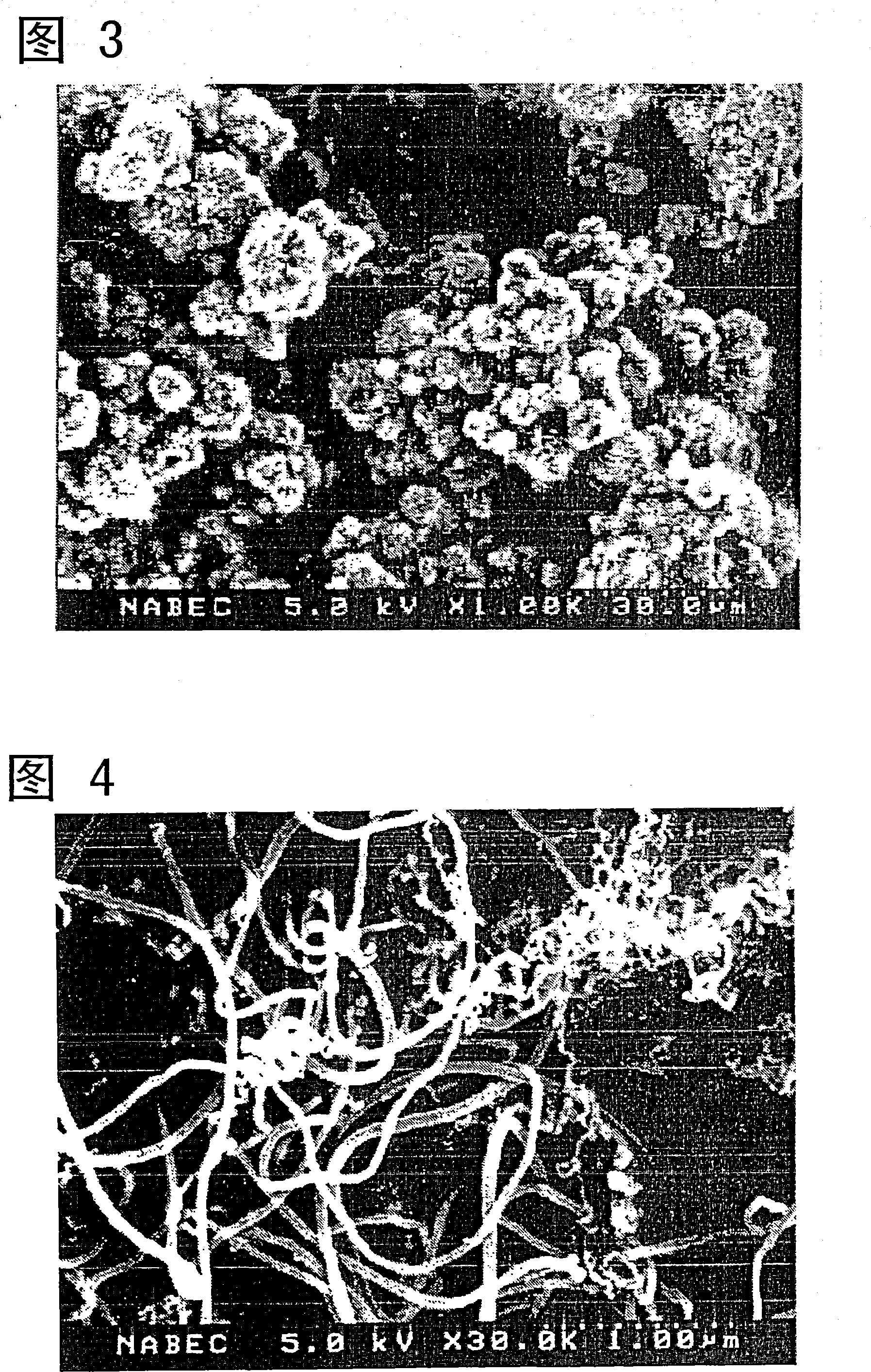Composite negative-electrode active material, process for producing the same and nonaqueous-electrolyte secondary battery
A negative electrode active material, non-aqueous electrolyte technology, used in non-aqueous electrolyte batteries, non-aqueous electrolyte battery electrodes, secondary batteries, etc. Effect of charge/discharge cycle characteristics
- Summary
- Abstract
- Description
- Claims
- Application Information
AI Technical Summary
Problems solved by technology
Method used
Image
Examples
Embodiment 1
[0100] 1 g of iron nitrate nonahydrate (special grade) manufactured by Kanto Chemical Co., Inc. was dissolved in 100 g of ion-exchanged water (below, the same iron nitrate nonahydrate was used). The solution thus obtained was mixed with silicon oxide (SiO) manufactured by Kojundo Chemical Laboratory Co., Ltd. which was pulverized into a particle diameter of 10 µm or less. The SiO used here was analyzed according to the gravimetric method (JIS Z2613 method), and as a result, the molar ratio of O / Si was found to be 1.01. The mixture of the silica particles and the solution was stirred for 1 hour, and then water was removed by an evaporator, so that the silica particles supported ferric nitrate on their surfaces.
[0101] The ferric nitrate-loaded silica particles were placed in a ceramic reaction vessel, and the temperature was raised to 500 °C in the presence of helium. Then, the helium gas was replaced with a mixed gas composed of 50% by volume of hydrogen gas and 50% by volu...
Embodiment 2
[0105] The same operation as in Example 1 was carried out, except that 1 g of nickel nitrate hexahydrate (special grade) manufactured by Kanto Chemical Co., Inc. was dissolved in 100 g of ion-exchanged water (below, the same nickel nitrate hexahydrate was used) instead of 1 g Iron nitrate nonahydrate. As a result, a composite negative electrode active material B composed of silicon oxide particles having herringbone-shaped carbon nanofibers grown on its surface was obtained.
[0106] The particle size of the nickel particles supported on the silica particles was substantially the same as that of the iron particles in Example 1. The fiber diameter, fiber length and weight ratio of the grown carbon nanofibers to the silicon oxide particles are basically the same as those in Example 1. SEM observation confirmed the presence of thin fibers with a diameter of 30 nm or less in addition to fibers with a diameter of about 80 nm. The grain size of SiC is also the same as in Example 1...
Embodiment 3
[0108] The same operation as in Example 1 was performed except that 0.5 g of iron nitrate nonahydrate and 0.5 g of nickel nitrate hexahydrate were dissolved in 100 g of ion-exchanged water instead of 1 g of iron nitrate nonahydrate. As a result, a composite negative electrode active material C having silicon oxide particles of folded carbon nanofibers grown on its surface was obtained.
[0109] The particle diameters of the iron particles and the nickel particles supported on the silica particles were substantially the same as those of the iron particles in Example 1. The fiber diameter, fiber length and weight ratio of the grown carbon nanofibers to the active material particles were substantially the same as those in Example 1. SEM observation confirmed the presence of thin fibers with a diameter of 30 nm or less in addition to fibers with a diameter of about 80 nm. The grain size of SiC is also the same as in Example 1.
PUM
| Property | Measurement | Unit |
|---|---|---|
| particle diameter | aaaaa | aaaaa |
| length | aaaaa | aaaaa |
| diameter | aaaaa | aaaaa |
Abstract
Description
Claims
Application Information
 Login to View More
Login to View More - R&D
- Intellectual Property
- Life Sciences
- Materials
- Tech Scout
- Unparalleled Data Quality
- Higher Quality Content
- 60% Fewer Hallucinations
Browse by: Latest US Patents, China's latest patents, Technical Efficacy Thesaurus, Application Domain, Technology Topic, Popular Technical Reports.
© 2025 PatSnap. All rights reserved.Legal|Privacy policy|Modern Slavery Act Transparency Statement|Sitemap|About US| Contact US: help@patsnap.com


